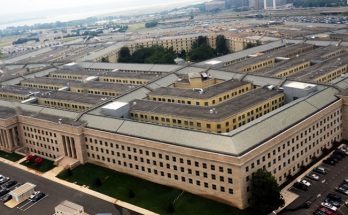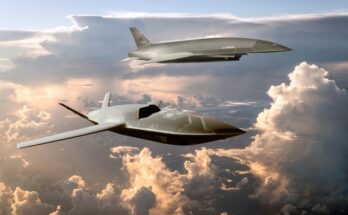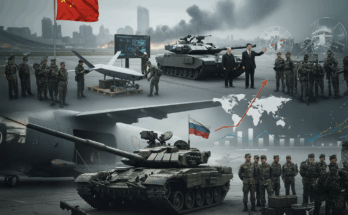
President Donald Trump imposed retaliatory tariffs on imports from U.S. trading partners, arguing that existing foreign tariffs negatively impact U.S. manufacturers and employment. The intricate nature of global trade, characterized by highly interconnected supply chains, renders the pursuit of a “fair” system exceptionally difficult, a task that Sisyphus would understand.
Putting aside the effects on the civilian sector, experts are saying that this tariff war is a threat to national security. Joint ventures between the United States and its allies are under threat at a time when Western nations are attempting to boost cooperation and production levels to meet the growing threat from China.
The defense industry operates in a unique space unlike its civilian counterparts. There will be problems, especially when you have companies that participate in both areas, such as Boeing. Yet the work performed by U.S. defense firms mostly takes place domestically. The tariffs could increase the cost of different specialized components built overseas and needed by U.S. defense companies. Delays in deliveries are possible.
Among the complaints from critics of these tariffs: “You can’t build a factory in a day. It will take years to find and train the necessary workers, even if you do. These tariffs are a disaster to a global defense initiative that took decades to build.” All are valid points.
A problem with these pronouncements of “doom and gloom” is that no one knows what President Trump is planning and what his end goal is. Trump has a complete disregard for established protocols. World leaders gasped when Trump used “Little Rocket Man” to refer to North Korean Leader Kim Jong Un. “A bull in a china shop” is a common utterance.
Trump favors a negotiation process known as rejection-then-moderation. Trump stakes out an extreme position in negotiations and then “allows” his opponents to pull him towards a compromise. Trump also likes using exaggeration to influence negotiations. Making Canada the 51st State is a Trump quip. Such unserious statements keep opponents guessing about what Trump might do next.
The people within the Trump administration know how interconnected its defense supply chain is. They know where there is room to maneuver. “What do you mean key components in the MQ-9 Reaper UAV are made overseas? When did that happen?!” Has such a conversation really occurred at the Pentagon?
The tariffs will have an impact, especially when imposed on materials used in defense production like aluminum and steel. Yet defense industry groups are already in talks with the Trump administration, requesting strategic carve-outs. There is support in Congress for these carve-outs.
The countries hit hardest by the new tariffs include those in Europe, as well as Taiwan, South Korea, Japan and Australia, all of which are significant markets for U.S. defense systems. Taiwan’s TSMC is the largest producer of microchips in the world. Trump’s tariff for Taiwan was 32 percent. As the stock price of Nvidia, AMD and Qualcomm fell, the White House issued a fact sheet showing semiconductors were not subject to the tariff. Tariffs imposed and deals made.
Aleksandr Solzhenitsyn has a famous quote about the Soviets. “We know that they are lying, they know that they are lying, they even know that we know they are lying, we also know that they know we know they are lying too, they of course know that we certainly know they know we know they are lying too as well, but they are still lying.” Sometimes, it is best to just stop listening to all the noise and take your dog for a long walk.
For more than 35 years, Larry has been involved in research and analytical work for various Forecast International projects. He has contributed to the Airborne Electronics Forecast and was chief editor on the World Aerospace Weekly newsletter. Larry was directly responsible for the creation of World Weapons Review, a biweekly industry market research publication specializing in weapon systems and related material. He was the creator of Unmanned Vehicles Forecast, launched to cover the growing market for civil and military drones, and was involved in the development of the Airborne Retrofit & Modernization Forecast service. He is currently responsible for the Missile Forecast and for FI's two Unmanned Vehicles Forecast services – Airborne Systems and Land & Sea Systems.




